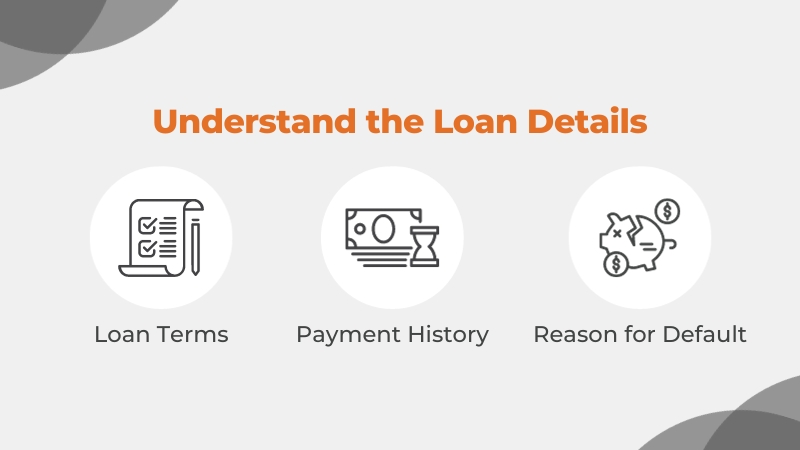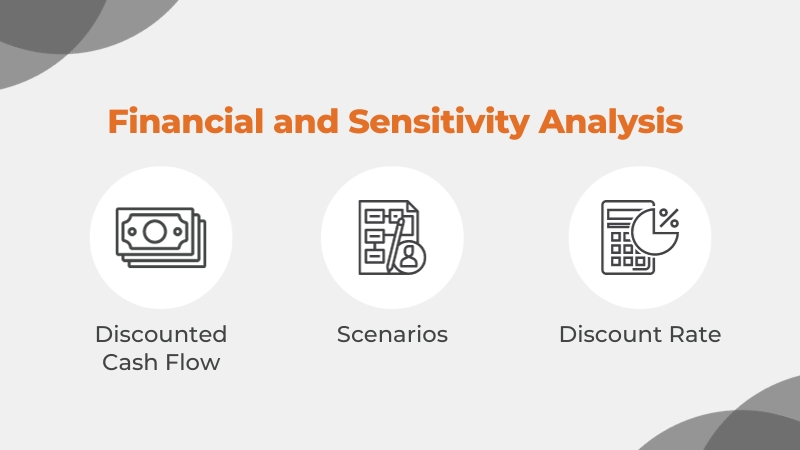Evaluating Non-Performing Commercial Real Estate Loans and Loan Portfolios
Commercial real estate (“CRE”) non-performing loans (“NPLs”) have been a topic of interest and concern for many years, through both up and down cycles. Before we delve further, it’s essential to grasp the concept of an NPL. A loan is classified as non-performing when the borrower is in default. This can occur for a multitude of reasons ranging from personal financial distress, deteriorating property conditions, or broader economic downturns.
Interest In Non-Performing Loans Grows
For the past several years, NPLs have generated even more interest for several reasons:
- Economic Impact of the Pandemic: The COVID-19 pandemic has profoundly affected businesses across sectors. Many establishments, particularly in the retail, hospitality, and entertainment sectors, faced prolonged closures or significant reductions in capacity, leading to decreased revenues and, in many cases, an inability to service their debts. This had a direct impact on the performance of commercial loans tied to such properties.
- Shift in Work Culture: The rise of remote work has led to reduced demand for office spaces. Many companies have chosen to reduce their office footprint, adopt a hybrid model, or even go entirely remote. This trend can impact the long-term value and demand for commercial office spaces, potentially leading to higher loan default rates in this sector.
- Evolution of Retail: Even before the pandemic, brick-and-mortar retail was facing challenges from the growth of e-commerce. The pandemic further accelerated this trend, causing many physical retailers to shutter their doors. Consequently, shopping malls and retail centers (especially B & C malls and centers) may face increased vacancies and declining rents, affecting the performance of loans tied to these assets.
- Liquidity and Financing Concerns: With the uncertainties surrounding commercial real estate, lenders have become more cautious. This has led to tighter lending standards, reduced loan-to-value ratios, and increased interest rates for commercial borrowers, further compounding the challenges in the sector.
- Potential for Distressed Asset Sales: As the number of non-performing loans grows, it leads to an increase in distressed asset sales in the CRE sector. Opportunistic investors and private equity firms often show interest in such assets, hoping to acquire them at a discount and benefit from potential upside in the future.
- Regulatory and Banking Impact: Banks and financial institutions with significant exposure to CRE NPLs could face capital adequacy and liquidity challenges. Regulators might monitor these developments closely to ensure financial system stability. Increased NPLs could also lead to stricter regulatory scrutiny or interventions.
- Macro-Economic Considerations: The health of the commercial real estate sector often reflects broader economic health. High non-performing loan rates might indicate underlying economic challenges, potentially affecting investor confidence and economic growth prospects.
- Repricing of Risk: As the performance of CRE loans becomes more uncertain, there might be a repricing of risk in the sector. This could affect overall returns, capitalization rates, and valuation metrics for commercial properties.
Evaluating Non-Performing Commercial Real Estate Loans
Evaluating a non-performing loan (“NPL”) or loan portfolio, especially considering the sector, regulatory, and economic factors mentioned, requires a thorough understanding of the loans’ underlying collateral, the legal landscape, and the market conditions. An NPL portfolio can offer significant opportunities for value creation, but it also comes with heightened risks. Here’s a systematic approach to evaluate such a portfolio:
Understand the Loan Portfolio Composition:
- Type of Assets: Different types of real estate (e.g., office, retail, industrial, multifamily) have different risk-return profiles and market dynamics.
- Geographic Distribution: Location can greatly influence the value of the real estate and ease of disposition.
- Loan Sizes and Maturities: Larger loans might mean more concentrated risks, while varied maturities can impact the timeline for resolution and cash flow.
Evaluate the Underlying Collateral:
- Property Appraisals: Engage an independent property appraiser or ask a commercial real estate broker to provide a broker opinion of value (BOV) to get an updated value of the underlying real estate collateral.
- Property Details: Understand the type, location, size, age, physical condition, occupancy levels, and other pertinent details of the property.
- Physical Condition: Physical inspections can provide insights into the property’s condition and potential capital expenditure needs.
- Environmental Review: Engage an environmental consultant to determine if the collateral has any exposure to costly current or past environmental risks.
- Occupancy Levels: For income-producing properties, the level of occupancy can significantly impact its value and cash flow potential. Review the rent roll, lease terms, and tenant quality.
Legal and Documentation Review:
- Loan Documentation: Ensure that all loan documents, including promissory notes, mortgages, guarantees, and any modifications or extensions, are in order and enforceable. Furthermore, ensure that you have a complete set of loan documents, including any modifications or amendments.
- Title Review: It’s crucial to determine that the property titles are clear of any liens or encumbrances that might affect value or the ability to sell the asset.
- Legal Jurisdiction: The legal framework of the jurisdiction in which the properties are located can influence the ease or difficulty of enforcing the loan terms.
- Enforceability: Review the documentation to ensure that the loan terms are legally enforceable.
Understand the Loan Details:
- Loan Terms: Review the interest rate, original loan amount, maturity date, payment frequency, etc.
- Payment History: Examine the borrower’s payment behavior, duration of default, and any previous instances of default.
- Reason for Default: Understand why the loan became non-performing. Was it due to borrower-specific issues, property-specific problems, or broader economic factors?
Analyze Borrower Solvency and Willingness to Cooperate:
- Understanding the borrower’s financial condition can provide insights into the likelihood of the loan’s recovery or restructuring.
- Examine the borrower’s financial statements and credit history.
- Engage with the borrower to gauge their willingness to find a resolution. Sometimes a cooperative borrower can make the restructuring process smoother.
Determine Recovery Scenarios and Strategies:
- Restructuring: Consider the possibility of modifying the loan terms to make it feasible for the borrower to repay.
- Foreclosure: Understand the legal process, costs, and timeframes associated with foreclosing on the property, if it comes to that.
- Sale or Disposition: Explore the possibility of selling the property or the loan itself to recover the funds.
Understand Market Conditions:
- Analyze local real estate market trends, vacancy rates, demand-supply dynamics, and any upcoming macroeconomic factors that might influence the real estate market.
Operational Capabilities:
- If considering purchasing the NPL portfolio, evaluate your or your team’s ability to manage, restructure, or work out the loans. This might require expertise in property management, legal negotiations, and property sales.
Financial and Sensitivity Analysis:
- Discounted Cash Flow: Estimate potential recovery amounts based on expected cash flows, taking into account your required return and the time value of money.
- Scenarios: It’s essential to run different scenarios (best case, base case, worst case) to understand potential outcomes and risks.
- Discount Rate: Understand the required return for your risk profile and use it to discount future cash flows.
Exit Strategy:
- Determine upfront how you intend to exit from the investment—whether through restructuring, foreclosure, property sales, or securitization.
- Determine the costs associated with holding, managing, or disposing of the asset, including legal fees, property management fees, and other associated costs.
Engage Experts:
- Especially if you are new to NPLs or unfamiliar with the local market, consider engaging real estate experts, legal counsel, and financial analysts to assist in the evaluation process.
Due Diligence:
Comprehensive due diligence is paramount. Ensure every aspect, from legal to financial to property-specific details, is thoroughly scrutinized. Any oversight can lead to overvaluation and potential losses.
A Final Word on Non-Performing Loans
Analyzing a commercial real estate non-performing loan or loan portfolio is a nuanced process. It demands a blend of financial acumen, real estate knowledge, legal expertise, and, often, negotiation skills. However, for those willing to invest the time and effort, NPLs can be a source of significant returns, especially if acquired at a discount and managed effectively. Like all investments, the mantra remains the same: The greater the due diligence, the better equipped an investor is to make informed decisions.
Additional Information on Non-Performing Loans and Distressed Commercial Real Estate Assets
If you’d like more information on non-performing commercial real estate loans, there’s an insightful post in the Realogic Blog on the roles and responsibilities of commercial real estate loan special servicers and the strategies they employ to manage non-performing or sub-performing loans.
Or, if you’d like more information on distressed assets, there’s also a post on lease administration for distressed commercial real estate properties that you might find helpful.
Help With Non-Performing Loans and Distressed Assets
If you ever need help underwriting an NPL or NPL portfolio, Realogic has over three decades of non-performing loan underwriting experience. Our expert team has the skills, knowledge and experience to provide the accurate information, data and insights you need to confirm your property valuations and make smart, profitable investment decisions. For more information on our non-performing loan services, visit the underwriting page on our website.
Likewise, if you ever find yourself needing help with lease administration for a distressed commercial property, we have over 30 years of experience in lease administration, including for distressed assets. For more information on Realogic’s lease administration services, visit the lease administration page on our website.
About the Author
Mike Phelps is Realogic’s General Counsel. Mike has over 20 years of commercial real estate experience, including with financial modeling and analysis, analysis of acquisitions and dispositions, due diligence, underwriting, development and review of financial proformas and Argus/Dyna training. In his current role, he supports each of Realogic’s business lines and provides counsel on corporate, employment and compliance issues. He is also responsible for negotiation of contracts, master service agreements, software licenses and subscriptions and other intellectual property matters. Mike welcomes your comments on his post. He can be reached at mphelps@realogicinc.com
